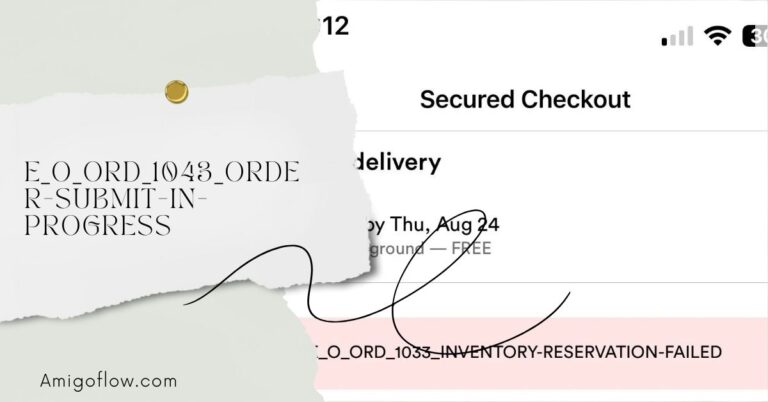The term “32.32 2.32-4.84-4.84 65-97” might look like a cryptic code at first glance, but upon closer inspection, it’s likely that each component has a meaningful interpretation. The arrangement of numbers and symbols may refer to a combination of measurements, coordinates, statistics, ranges, or even mathematical expressions.
If you’re someone from the United States or beyond who’s curious about this phrase, you’re in the right place! This guide will simplify everything for you. In this article, we will break down every aspect of “32.32 2.32-4.84-4.84 65-97” and explain how you can understand its relevance and application.
Breaking Down “32.32 2.32-4.84-4.84 65-97”
Before diving into specific interpretations, let’s break down each component to understand what it could represent:
- 32.32: This may indicate a precise value, possibly a measurement, statistic, or coordinate. Numbers in this format often represent something with two decimal points, commonly found in measurements like length, weight, or temperature.
- 2.32: Similar to 32.32, this may also represent a measurement, quantity, or a rate of change.
- -4.84: The negative sign could indicate a loss, deficit, or a negative trend, whether in temperature, distance, or some other metric.
- 65-97: This likely represents a range, with the lower bound being 65 and the upper bound being 97. Such a range could refer to anything from age groups, temperatures, or even statistical data.
Possible Interpretations of Each Element
Now, let’s explore potential meanings behind each segment.
32.32
This number could symbolize:
- Temperature: In degrees Fahrenheit or Celsius, 32.32 could represent a specific temperature value. For example, 32°F is the freezing point of water.
- Financial data: It could represent a stock price, exchange rate, or other financial metrics.
- Measurement in inches or centimeters: It could be the length of an object.
2.32
This smaller number may suggest:
- Distance: Perhaps this is a short distance in miles or kilometers.
- Rate or percentage: It could represent a percentage change, like a 2.32% increase or decrease in something, such as growth rates.
- Speed: It could refer to a speed, whether in miles per hour, kilometers per hour, or other units.
-4.84 (twice)
The repetition of -4.84 is intriguing and suggests that this value is significant. It could refer to:
- A decrease or a deficit: In economics or finance, negative numbers often indicate a loss, reduction, or debt.
- Temperature: In meteorology, negative values often reflect temperatures below zero (in Celsius or Fahrenheit).
Why is it repeated? It might indicate two simultaneous or correlated deficits, like two measurements going down by the same amount.
65-97
Ranges are commonly used in statistics, scientific studies, and even age brackets or weather reports:
- Temperature range: 65-97°F could represent a comfortable temperature range, common in weather forecasts.
- Age range: 65-97 might be used to categorize age groups in population studies, surveys, or medical reports.
- Statistical data: It could reflect a range of values within a dataset, such as percentages or scores.
Is “32.32 2.32-4.84-4.84 65-97” a Measurement?
One strong possibility is that this sequence is part of a measurement system. Let’s explore how each number might relate to physical dimensions:
- 32.32 could be a larger dimension like length or height, while 2.32 could represent something smaller, like width or depth.
- The -4.84 values might represent some sort of reduction or error in measurement. For instance, in engineering or construction, measurements can sometimes involve tolerances where negative numbers indicate material lost or adjustments made.
- 65-97 could be the acceptable range of measurement variability.
Example:
Imagine you are measuring the dimensions of a structure. The width is 32.32 inches, and the height is 2.32 inches. Due to some errors, two measurements are off by -4.84 inches. However, everything must fall within the acceptable range of 65 to 97 inches for the entire design.
Is “32.32 2.32-4.84-4.84 65-97” a Coordinate?
Another interpretation could be that “32.32 2.32-4.84-4.84 65-97” refers to coordinates or geographic data. Let’s break it down in this context:
- 32.32 could refer to latitude.
- 2.32 could represent longitude.
- -4.84 might be a relative distance or adjustment, possibly denoting changes in position (e.g., east/west or north/south).
- 65-97 could represent altitude or elevation in feet or meters.
Example:
A pilot might see such numbers in navigation data or flight instruments, indicating coordinates for a flight path with altitude ranges between 65 and 97 feet or meters.
Scientific and Mathematical Interpretation
Mathematically, this sequence could be part of a formula, data set, or an algorithm used in different fields like engineering, computer science, or finance. Here’s how:
- 32.32 and 2.32 could represent variables or constants.
- -4.84 might be a negative shift or adjustment in a formula.
- 65-97 could be the range for possible outcomes or solutions to an equation.
For instance, in financial modeling, numbers like these might represent predictions or outcomes from an algorithm that processes data about price changes, rates, or trends.
Real-Life Applications of “32.32 2.32-4.84-4.84 65-97”
Here are some potential real-life applications for this sequence:
1. Finance:
If this sequence refers to stock prices or economic indicators:
- 32.32 could be a stock price or a commodity value.
- 2.32 might indicate growth percentage.
- -4.84 could represent a loss in value for two different stocks.
- 65-97 might represent the historical high and low ranges of a financial asset over a given period.
2. Weather Forecasting:
Weather stations or meteorological instruments might use these numbers to represent various conditions:
- 32.32 could be the temperature (in degrees Fahrenheit).
- 2.32 might represent wind speed or precipitation.
- -4.84 might indicate temperature below freezing or a decrease in weather severity.
- 65-97 could represent the temperature range expected during the day.
Exploring “32.32 2.32-4.84-4.84 65-97” in Technology
In technology, numbers like these could represent data in a wide variety of systems:
- IP addresses: Although not in typical formats, numbers could represent portions of an address.
- Bandwidth or signal strength: They might indicate signal loss or fluctuation, where -4.84 could represent a drop in performance.
- System thresholds: In software, numbers might indicate acceptable limits for performance.
Example:
In a tech report, 32.32 might be the average CPU utilization, 2.32 the RAM usage, while -4.84 could be a decrease in system performance, and 65-97 could be the acceptable operating temperature range.
How to Relate This Phrase to Temperature or Age Ranges
The range 65-97 is highly suggestive of either temperature or age-related data.
Temperature Interpretation:
In a weather report, 32.32 could be a specific temperature (close to freezing in Fahrenheit), while 65-97 represents a warm temperature range. The negative values might indicate below-freezing conditions, perhaps in Celsius.
Age Interpretation:
The sequence could also relate to demographics, where 65-97 indicates an age group. For example, 32.32 might be a median age for people undergoing a specific health screening, with 2.32 as the variance. The -4.84 values could represent differences in life expectancy.
FAQs About “32.32 2.32-4.84-4.84 65-97”
Q1: Is “32.32 2.32-4.84-4.84 65-97” a real formula or just a random number?
It’s likely not random. It could be part of a measurement system, a scientific formula, or represent real-world data in finance, weather, or even demographics.
Q2: Could this be a GPS coordinate?
Possibly. Some parts, like 32.32, might indicate latitude, and 2.32 might indicate longitude, while other parts could represent additional metrics like elevation.
Q3: What is the significance of the range “65-97”?
The range suggests limits, possibly in temperature, age, or data sets. It defines a lower and upper boundary.
Q4: Can this sequence apply to more than one field?
Yes, the sequence might have different meanings depending on the context. It could apply to finance, weather, demographics, or even technology.
Final Thoughts
The term “32.32 2.32-4.84-4.84 65-97” can be interpreted in many ways depending on the context. It could be a measurement, a coordinate, financial data, or even part of a scientific or mathematical model. While the exact meaning may vary, the structure of the numbers suggests precision and specificity, possibly in a technical or analytical field.


















